Dinosaurs - one of the world's greatest prehistoric mysteries. What happened to them? Where did they go? There are different options depending on what you think and no real way to be 100% sure. We all know about fossils, and at one time or another we were all obsessed with dinosaurs. For most of us, school would have told us that these prehistoric creatures lived in a time before humans. The first thing we learn about dinosaurs is 'millions of years ago', but how do we know?
Some of the best known examples of dinosaur sight
-
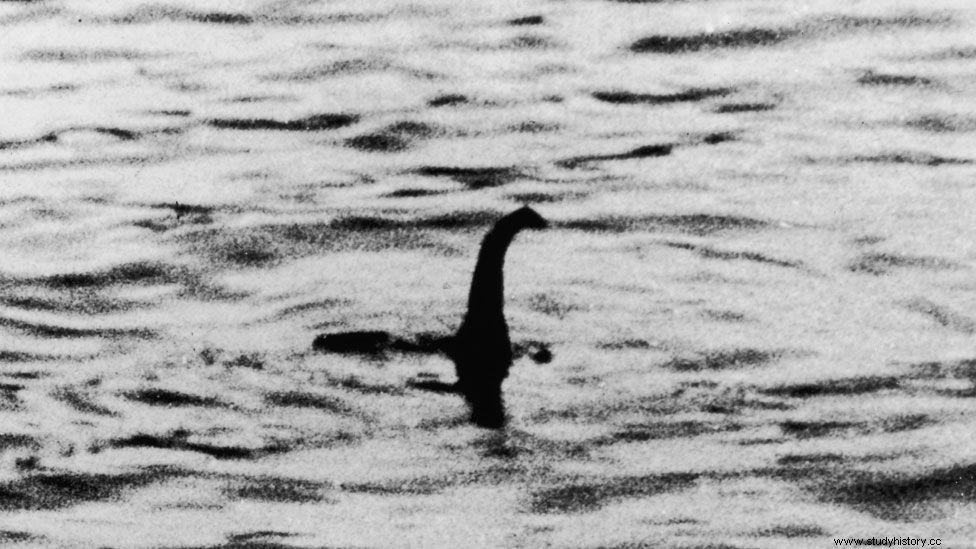
- A black and white photograph of the Loch Ness monster 'Nessie' - most likely scam. Credit:BBC
Many of you will have heard of at least a few of these. It is worth noting that just because these are known does not mean that they are true. The possibility that some of these are real or fake has always been up for discussion. In many cases, however, increasing evidence may indicate that there is more to these stories than fables.
The Loch Ness Sea Monster - Nessie
-
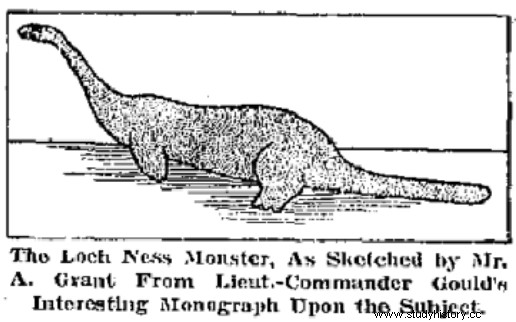
- An illustration by Arthur Grant of Loch Ness Monster 'Nessie'; credit:paulcockshott
While alleged sightings of Nessie can be dated back to the 5th century AD, the most famous stories occurred after 1933. Before 1933, the lake was difficult to access, and when the road was built, sightings began to be reported. The year the road was laid, there were 52 sightings of the creature. There have now been over 9,000 alleged sightings, some apparently false. In 1934, Arthur Grant claimed to have almost ridden into the Loch Ness monster on the motorcycle at night. He described the creature as having a long neck with oval eyes on the small head. The creature's strong tail reached around 1.8 meters and was rounded at the end. In total, the creature was about six meters long. The Loch Ness game warden claimed to have seen the creature 18 times during the 47 years he worked there.
All descriptions of Nessie indicate that the creature is a Plesiosaur. It has been seen both in and out of the water and even with a sheep in its mouth. Some photographs are more believable than others, and some are flat hoaxes. Pictures of the dinosaur's flippers have reportedly been captured, although no one has been able to capture the creature itself. Missions to scan the lake have shown nothing but the unusual "wrinkled" lake. In addition, the actual size and depth of the lake, as well as the many caves, make a thorough search impossible.
The Lake Champlain Monster - Champ
-
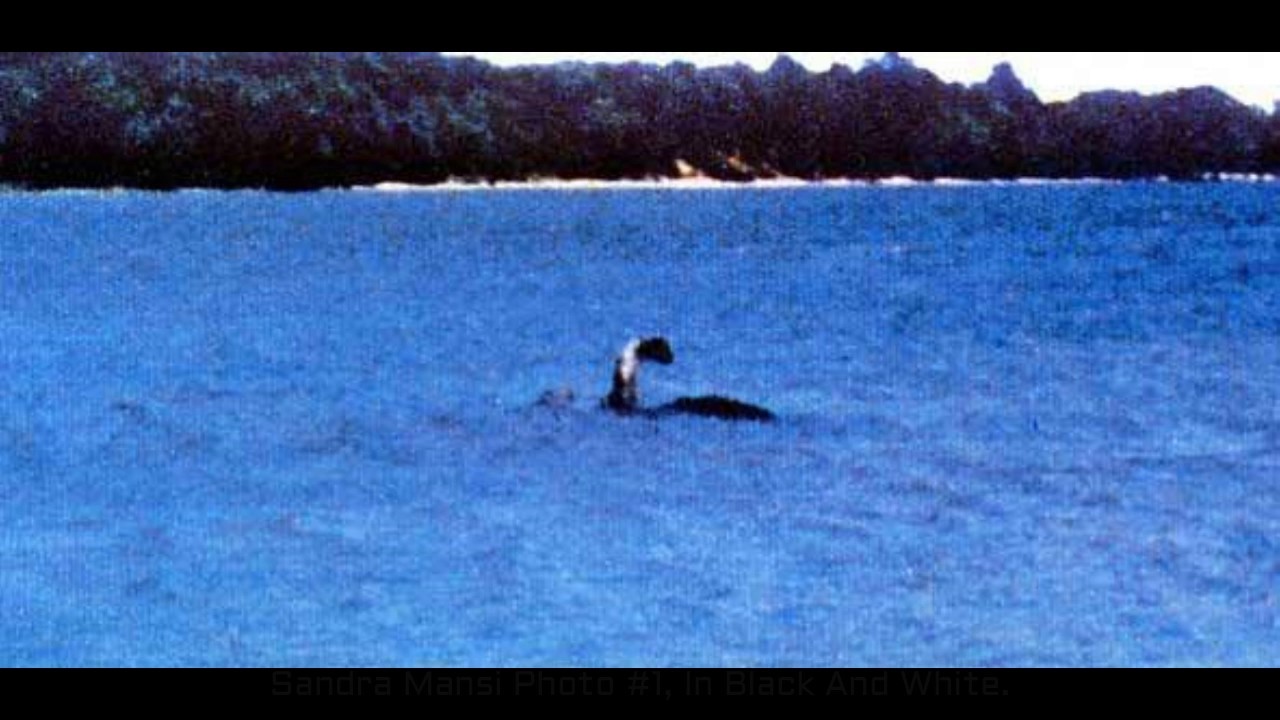
- A color photograph of what is believed to be the Lake Champlain monster or 'Champ'; credit:youtube
Lake Champlain is a 125-mile-long lake located between New York and the Vermont border. Here, the Lake Champlain monster known as Champ has been seen many times over the years. This dinosaur is also believed to be a plesiosaur or something similar. One of the most famous sightings was from a woman named Sandi Mansi in 1977. Sandi took a photograph of the creature in the water and famously said she knew she saw a dinosaur. Both she, her husband and her two children watched the creature for several minutes in awe.
Ogopogo
-
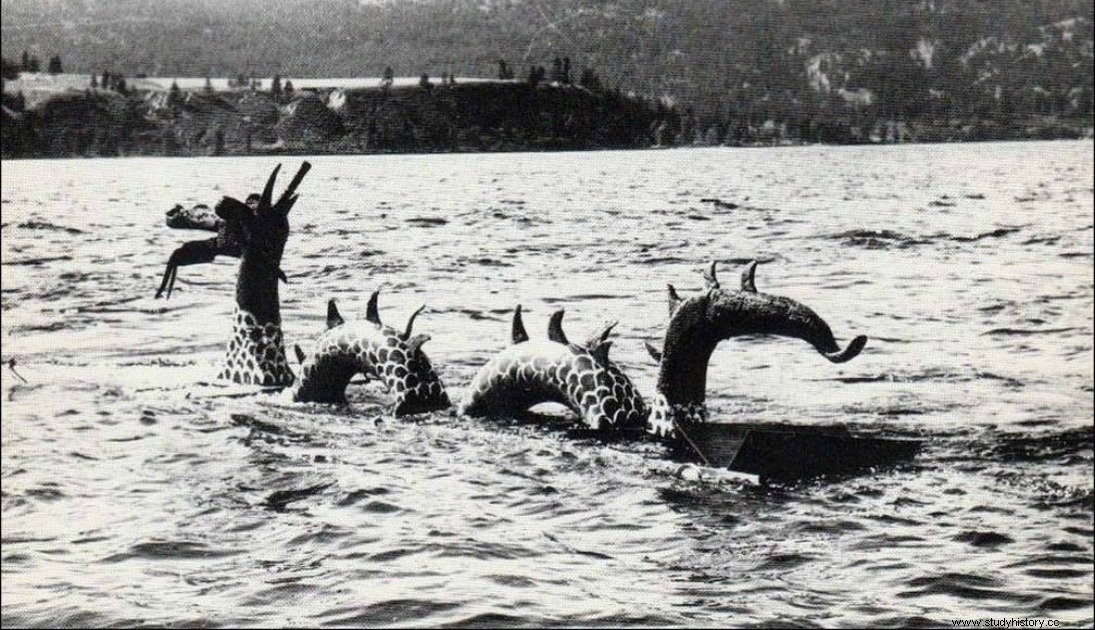 A black-and-white photograph of a depiction of Ogopogo; credit:kelownanow
A black-and-white photograph of a depiction of Ogopogo; credit:kelownanow
Reports of this creature are very similar to the Loch Ness monster. Thousands have claimed to see this dinosaur in Okanagan Lake, British Columbia. A man swimming along the lake claimed that the creature came up under him and thought it was a sturgeon. A family camping out on the lake in their boat, claimed to have seen two Ogopogo. They said their boat was hit and woke them up, and they saw two of the creatures swimming across the water.
Mokele Mbembe
-
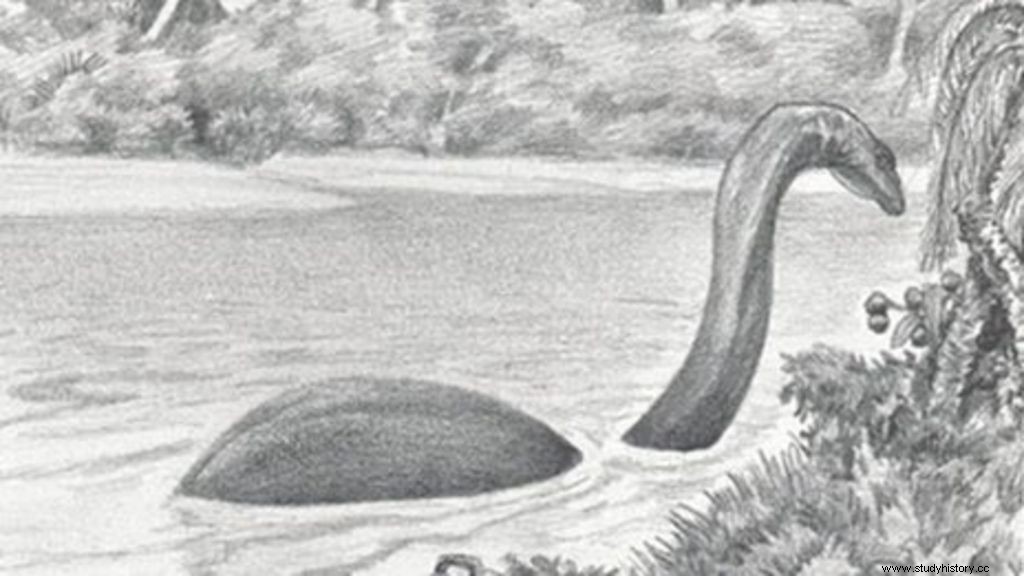
- An illustration of Mokele Mbembe, the dinosaur believed to be in the Congo. Credit:BBC
Allegedly living in the swamps of Congo, Mokele Mbembe has been believed to be an Apatosaurus. Natives of the Congo claim that these creatures mainly live in the water. They are rarely seen, but have been seen in the late evening and early morning feeding. According to witnesses, the creatures' favorite food is the malombo plant. Footprints of the animal have been found, and according to some, pygmies in the Congo would kill and eat them.
Mokele Mbembe has been described as dark brown with smooth skin and a small head attached to a long neck. They live in the water-rich caves along the river, and the locals do not see them as unusual creatures. However, those in the area fear the animal. This is because the creature is known to attack crocodiles, elephants and hippos in the river. Mokele Mbembe, along with ngoubou, has often been met in Central Africa. When a book with African animals and dinosaurs was shown to the locals, all but two pictures were rejected. The two pictures the locals claimed to be mokele Mbembe and ngoubou were those of a sauropod and a triceratops.
Lesser Known Dinosaur Observations
-
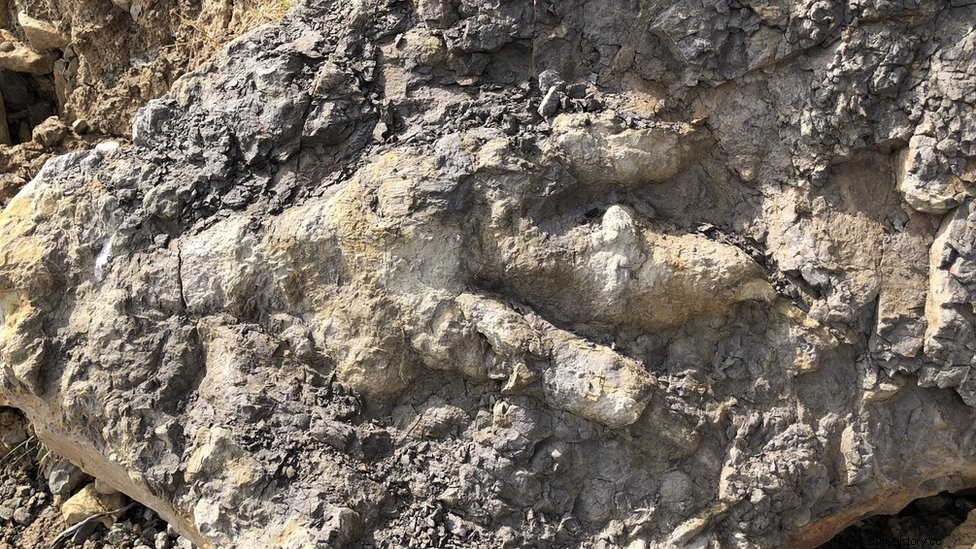
- Largest registered dinosaur print. Credit:BBC
Not all observations get as much media attention as Nessie and Mokele Mbembe. In fact, many are covered by other stories or are not even talked about. Some people wait 50 years to tell their story for fear of being seen as crazy. Others may not talk about their meetings just because it is normal for them. Whatever the reason, there are undoubtedly thousands of unimaginable encounters with what could be dinosaurs.
Diving teens meet a dinosaur
-
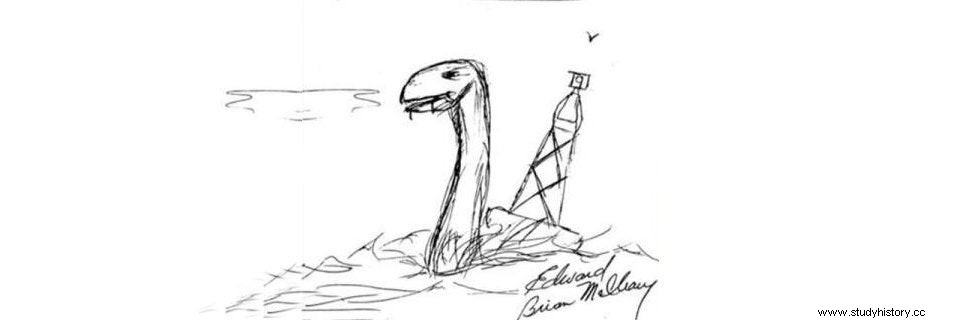
- An illustration drawn by the survivor of the 1962 Pensacola Sea Monster incident. Credit:reddit
In March 1962, five young men went diving in the harbor of Pensacola Florida. Of the five, one survived. The group was going to the sunken ship in the harbor when they were caught in a storm. The storm dragged them out to sea in their fleet, leaving them in a dense fog as it calmed down. There they began to hear splashing sounds similar to porpoises and a nauseating smell. The smell was like dead fish, and then they heard a loud hiss as the spray approached their raft. In the fog, the survivor claimed to have seen what looked like a three-meter-long pole sticking out of the water. At the top of the hole was a pear-like structure. The 'pole' bent in the middle and went under the water, disappeared and reappeared again and again as it got closer.
After the young group heard a loud hiss in the distance, they panicked and put on flippers. They went into the water to get away and shouted to stay together for safety. The fog split them and soon after, the survivor heard the screams of his comrades. He got one last look at the creature and described it as having a neck close to four meters long. The creature was smooth and had brown-green skin with an elongated head with many teeth. The witness claimed that it had a dorsal fin and greenish eyes. He survived the experience by climbing on the ship and waiting until the morning to swim back to the beach.
Kongamato / Batamzinga
-
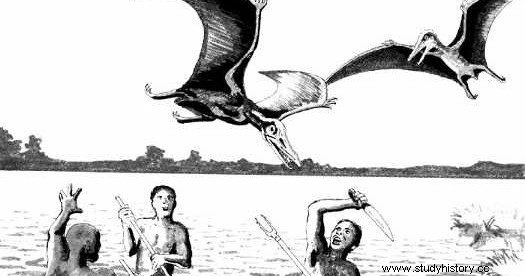
- Illustration of Kongamato, or pterodactyl 'dinosaur' attacking villagers. Credit:Accounts Receivable
Both names refer to the same creature. Kongamato or Batamzinga are said to live in different parts of Africa, from Congo down to Zimbabwe. According to some, the creatures lived around villages in Kenya, dug up the dead and ate them. Frank Melland, an African explorer, often heard rumors of a creature named Kongomato. This creature lived in the Jiundu swamps. When he asked the natives exactly what the creature was, they stated that it was a bird, but not exactly. It was more like a lizard with wings of skin resembling a bat. He showed them illustrations of animals, among them a pterodactyl. When they saw the pterodactyl, they all gestured to it and mumbled kongamato excitedly repeatedly.
Urufere, the South American dinosaur
-
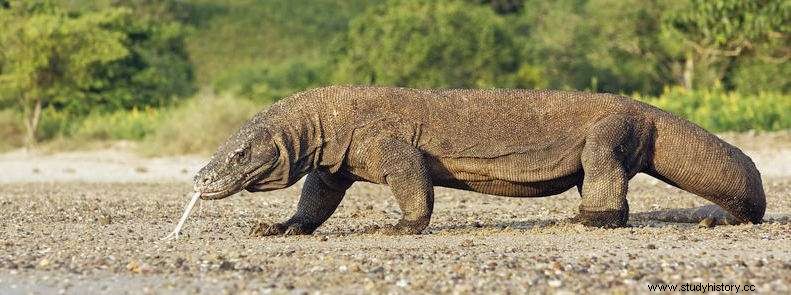
- A kamado dragon, thought to resemble Urufere. Credit:uberscubakomodo
This creature has been claimed to live in South America. The locals say it is nine meters long, one and a half meters high and makes a loud noise. The natives are terrified of it and avoid it at all costs. Uruffers, believed to resemble kamado dragons, are predators and have been known to hunt pigs and humans. The creature has remained elusive and many believe it is approaching extinction if not already extinct. The last known sighting of one of these animals was in 2002 by a hunting company in Brazil.
Historical documentation of dinosaurs
-
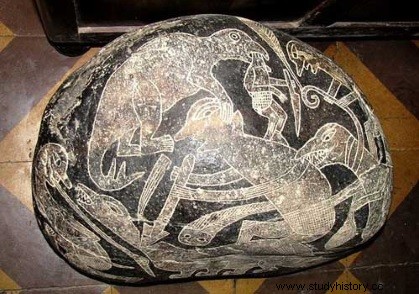
- Ica Tombstone showing dinosaurs being killed by humans. Credit:earthworms
Many alleged observations of dinosaurs took place after the 18th century, but there is evidence that goes back further. Some evidence comes from first-hand accounts from historians and explorers, while other evidence comes from artifacts. In all cases, these findings raise the question of what do humans and dinosaurs do at the same time?
Alexander the Great
-
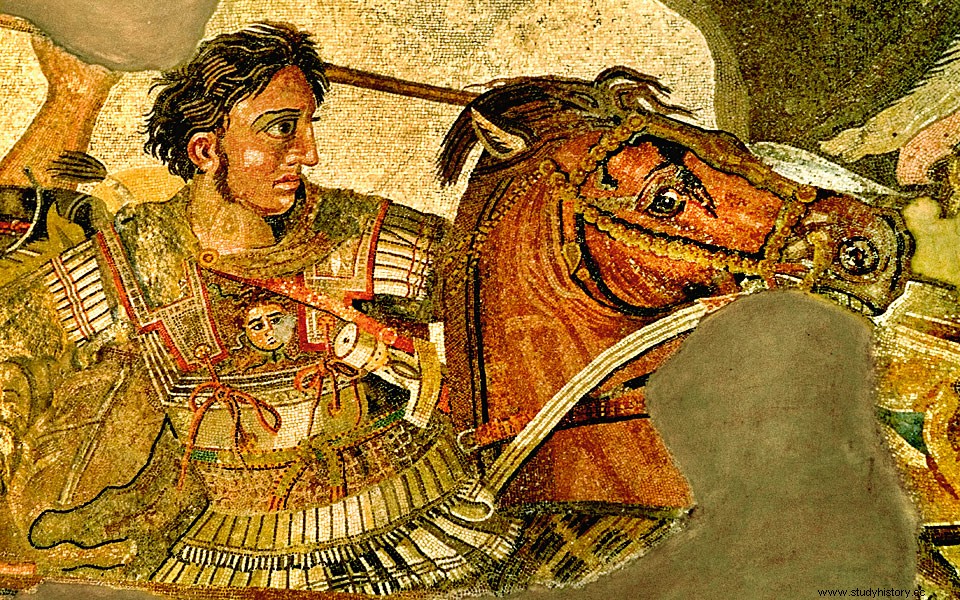 A mural by Alexander the Great. Credit:Greece-er
A mural by Alexander the Great. Credit:Greece-er
When Alexander the Great invaded India in 326 BC, he learned about what he called 'dragons' living in caves. The people worshiped the creatures and even King Abisharus is said to have kept worms up to 64 meters long. After conquering parts of India, Alexander came across a cave where a sacred serpent lived. The people begged him not to hurt or disturb the dragon, to which he agreed. As Alexander and his army passed the cave, the creature sniffed and hissed so loudly that the army was terrified. Those in the cave reported that the hose had to measure 30 meters, even though the whole was not visible. Only the creature's head protruded from the cave, and it was reported that the eyes were the same size as a Macedonian shield. The rulers of Alexander are said to have brought dragons back from Ethiopia.
Marco Polo wrote about dinosaurs
-
 Marco Polo. Credit:Biography
Marco Polo. Credit:Biography
On his travels through China, Persia and various other parts of Asia, Marco Polo recorded astonishing encounters. He lived in China for 17 years and claimed that the emperor bred dragons to pull his chariots. This can be further proven when the Chinese emperor appointed a 'royal bearer' in 1611, 400 years after Marco Polo.
When you leave the city of Yachi… you reach the province of Karazan, which is also the name of the main city. In front… they have two short legs… three claws like a tiger, with eyes bigger than a forepenny bread and very sharp.
"The jaws are wide enough to swallow a man, the teeth are large and sharp ... the whole appearance is so formidable that neither humans nor any kind of animal can approach them without fear ... and the following method is used to take them. About during the day, because of the great heat, they lurk in caves, from where, at night, they go out to seek food…
After that, they head to a lake, water source or river to drink. By their movement in this way along the coast, and their enormous weight, they made a deep impression, as if a heavy beam had been drawn along the sand. Those whose job it is to hunt them, observe the trail they are most often used to walking on, and attach to the ground several pieces of wood, armed with sharp iron spikes, which they cover with sand in such a way that they are not noticeable.
Therefore, when the animals make their way to the places they usually visit, they are wounded by these instruments and quickly killed ... "
Herodotus witnessed dinosaurs
-
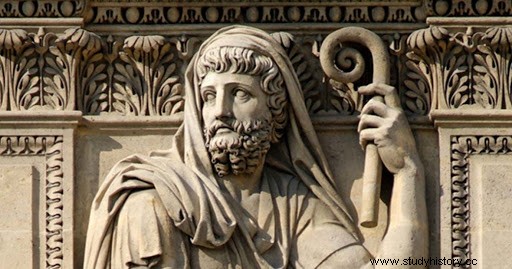
- A statue of Herodotus. Credit:tons
Herodotus, also known as the 'Father of History', claimed to have witnessed strange creatures on his travels. He talked about flying snakes on the Arabian Peninsula that wanted to travel to Egypt. Ibis was known to kill these creatures as they flew through rocky passes to Egypt. Flying snakes, which we can guess may be pterodactyls, were known to be cannibalistic and evil.
“There is a place in Arabia, which is very close to the city of Buto, to which I went when I heard of some winged serpents; and when I got there, I saw bones and spikes of snakes, in such large quantities that it was impossible to describe. The shape of the hose is like the water hose; but he has wings without feathers, and as good as possible on the wings of a bat. ”
Angkor Thom, Ta Prohm
-
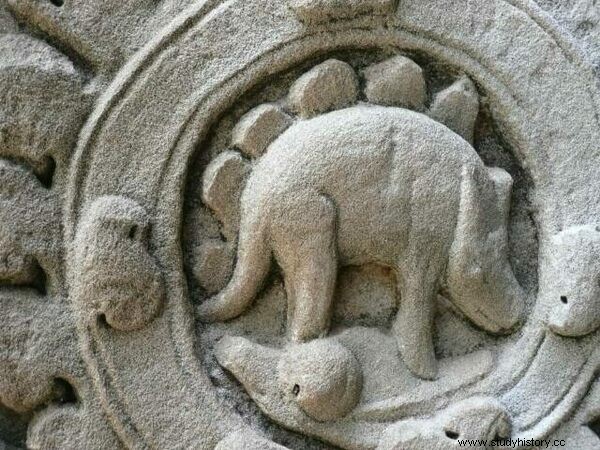
- A carving of a dinosaur in Ta Prohm, possibly a stegosaurus. Credit:atlasobscura
Carved into the stone at Ta Prohm in the Angkor Thom temple complex has a depiction of what is believed to be a dinosaur. The carving shows an almost rhino-like creature, but with large plates along the back. Ta Prohm dates back to the late 12th century and was built under King Jayavarman VII. It is found in Cambodia, South Asia. As Asia was considered the land of the dragons, this carving is consistent with historical records such as Marco Polo.
Saint George kills and carries
-
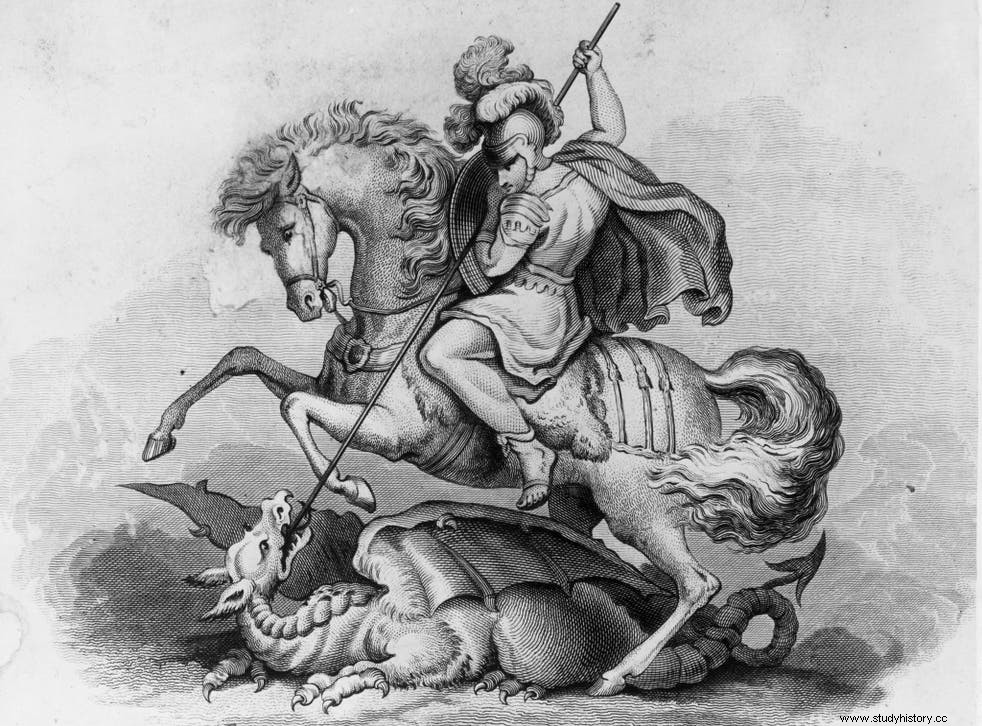 An illustration of Saint George killing a dragon or dinosaur. Credit:independent
An illustration of Saint George killing a dragon or dinosaur. Credit:independent
Many will have heard of Saint George. According to legend, St. George killed his first dragon in Africa and then later, in 1098 AD, several more. It was said that he had killed dragons in Germany in addition to England. In England, the summit where he defeated the dragon became known as Dragon Hill. At the top is a bare spot with white chalk. This is believed to be the place where the dragon's blood spilled so that no grass could grow.
“In the city of Silene, in Libya, there was a dragon, which was fed by two sheep a day; when these failed, the townspeople offered by lot one of their youths. One day the lot fell on the king's daughter, who was taken out to the victim, dressed in the wedding dress. George appeared and transfixed the dragon with the spear and then carried the confused dragon into the city with the princess' belt, where it was beheaded. "
Ishtar Gate Dinosaur depictions
-
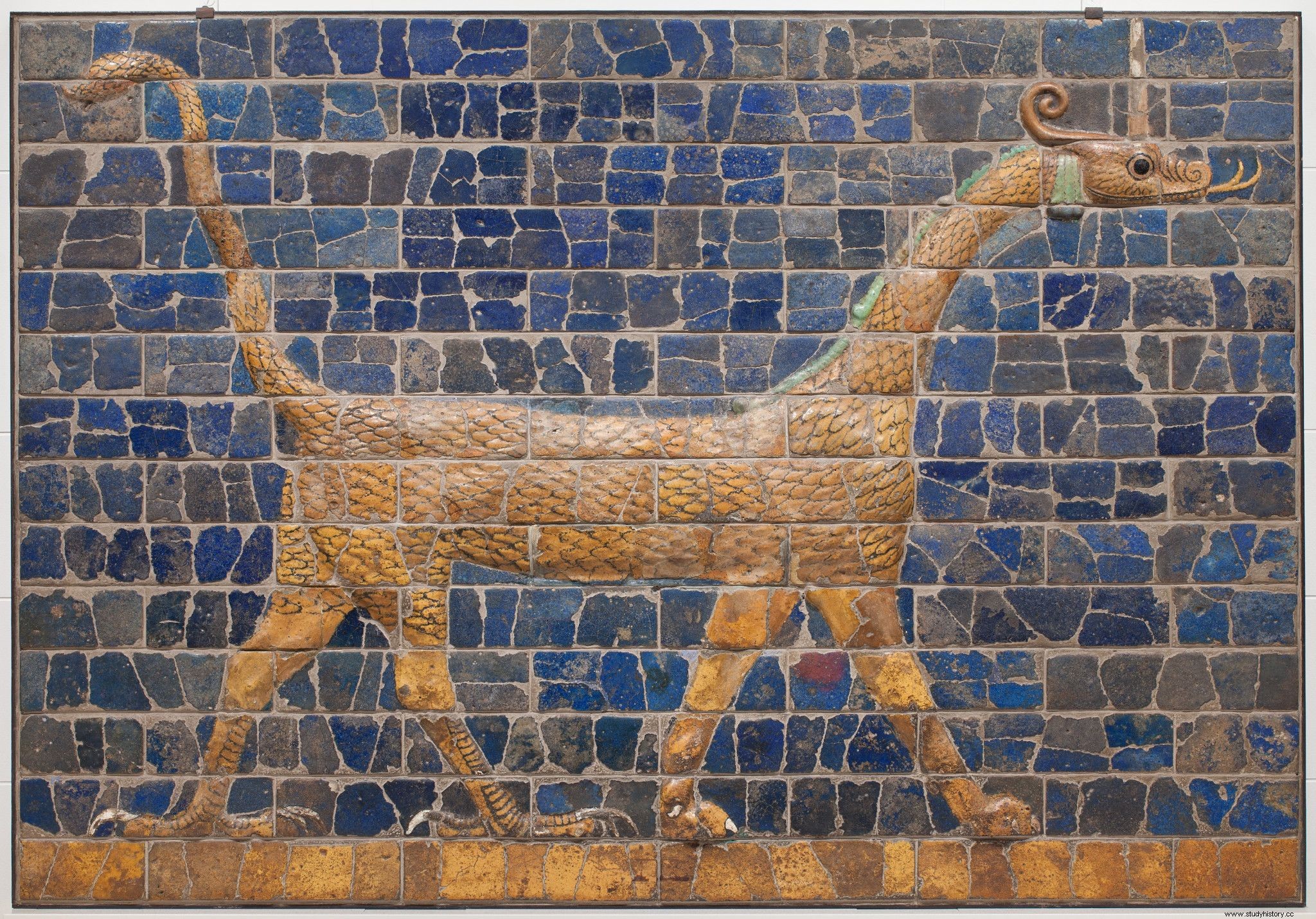
- A colored photograph of one of the dragons depicted on the Ishtar Gate, Babylon. Credit:day
The Ishtar Gate was built in Babylon under King Nebuchadnezzar II around 575 BCE On this magnificent gate are depictions of oxen, lions and what can be argued for are 'dragons' or dinosaurs. The gate is named after the Babylonian goddess Ishtar and represents the gods. Although these can only represent deities, it seems unlikely that two real animals would be chosen and one mythical.
Conclusion - Where are the dinosaurs?
-
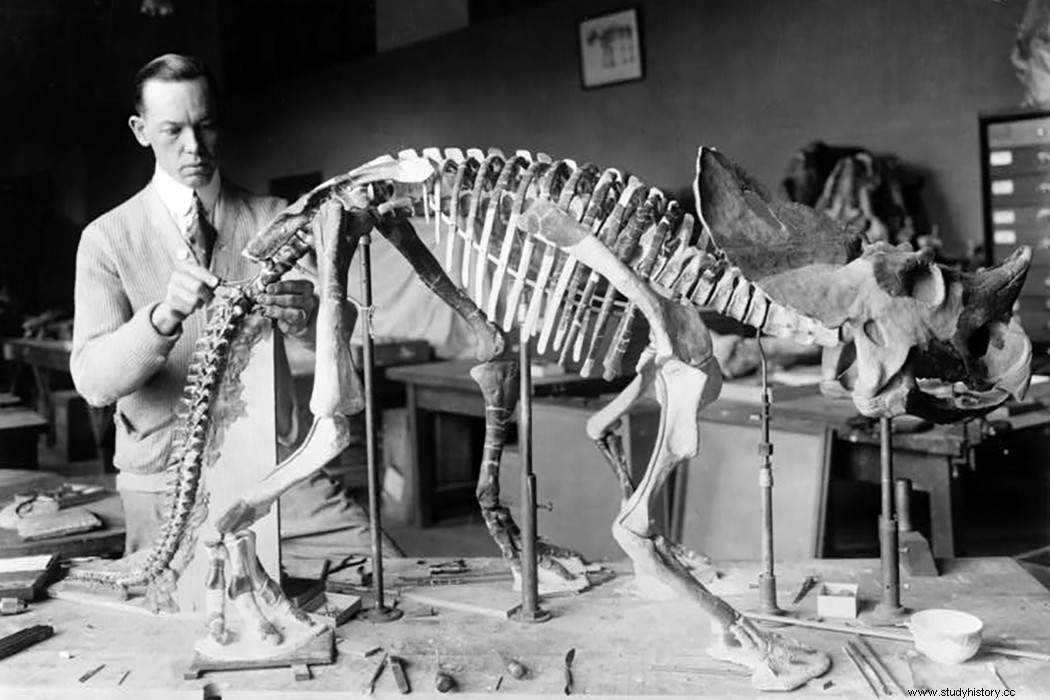
- Black and white photograph of a triceratops skeleton. Credit:Daily Large
If you choose to believe the evidence, it seems clear that dinosaurs have lived, or still live, among humans. Unfortunately, many cases of reported sightings prove to be fraudulent, but that should not discredit the true encounters. How do you know if one is a bluff or not? Sometimes it can be hard to say. But the amount of evidence, even from ancient times, that points to humans and dinosaurs living together, can not be thrown aside. Maybe it's possible that these descriptions came from fossils, maybe not. There are many more examples of historical works that were not included in the list. There are tombstones from Nazca that show dinosaurs, carvings in the Grand Canyon and even carvings of dinosaurs on hippopotamus tusks. Many artefacts date back to ancient Egypt, Persia and parts of Asia.
The number of accounts can mean something, or maybe they do not. Different countries in Scandinavia have their own versions of Nessie, as do Cornwall and elsewhere. Some dinosaur stories go back hundreds of years, others are far more recent. Do you think dinosaurs can still live on this earth?
